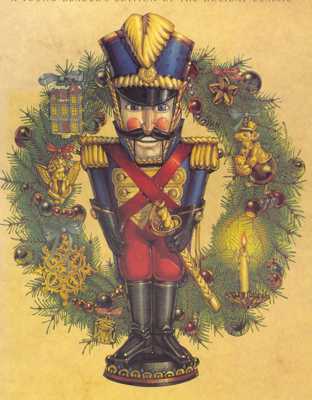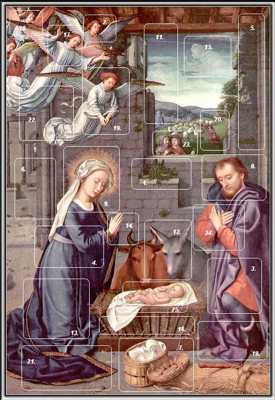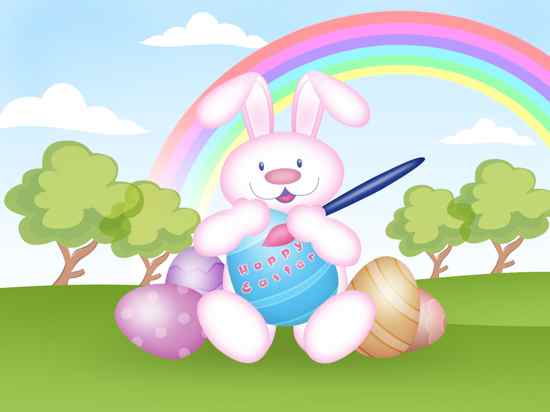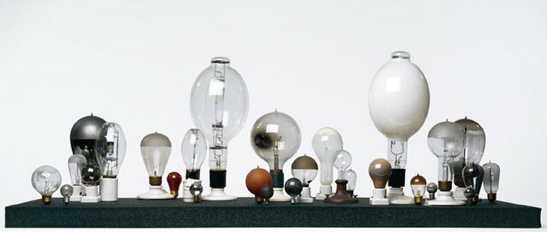 Mysteries
Mysteries  Mysteries
Mysteries  History
History 10 Surprising Stories About the Texas Rangers
 Humans
Humans 10 Philosophers Who Were Driven Mad by Their Own Theories
 Miscellaneous
Miscellaneous 10 Video-Game-Worthy Weapons and Armors from History
 Weird Stuff
Weird Stuff 10 Psychics Who Accurately Predicted Wartime Events
 The Arts
The Arts 10 Pieces of Art Inspired by a Broken Heart
 Health
Health 10 Science Fiction-Sounding New Medical Treatments
 History
History 10 Surprising Facts About the Father of Submarine Warfare
 Space
Space Ten Astonishing New Insights into Alien Worlds
 Weird Stuff
Weird Stuff 10 Bizarre Summer Solstice Rituals Still Practiced Today
 Mysteries
Mysteries Top 10 Haunting Facts About the Ghost Ship MV Alta
 History
History 10 Surprising Stories About the Texas Rangers
 Humans
Humans 10 Philosophers Who Were Driven Mad by Their Own Theories
Who's Behind Listverse?

Jamie Frater
Head Editor
Jamie founded Listverse due to an insatiable desire to share fascinating, obscure, and bizarre facts. He has been a guest speaker on numerous national radio and television stations and is a five time published author.
More About Us Miscellaneous
Miscellaneous 10 Video-Game-Worthy Weapons and Armors from History
 Weird Stuff
Weird Stuff 10 Psychics Who Accurately Predicted Wartime Events
 The Arts
The Arts 10 Pieces of Art Inspired by a Broken Heart
 Health
Health 10 Science Fiction-Sounding New Medical Treatments
 History
History 10 Surprising Facts About the Father of Submarine Warfare
 Space
Space Ten Astonishing New Insights into Alien Worlds
 Weird Stuff
Weird Stuff 10 Bizarre Summer Solstice Rituals Still Practiced Today
15 Things You Didn’t Know Were German
While doing research for an article recently, I came across so many things that I had no idea were German, or that I never knew had their roots in German traditions. It isn’t hard to imagine that America and Germany shares a lot of similar customs and inventions. After all, roughly 17% of Americans are of German descent. The side effect of my research diversion is this list! This list is courtesy of Lindsey Leavitt.

Although the origins about this delicious, plate swamping treat vary (I mean, we can’t even agree about who or where it was first served in the Lone Star State) most sources say that it is attributed to German and Austrian immigrants in Texas, who brought over the recipe for Wiener Schnitzel. Of course, Americans took it up a notch and really fried the heck out of that sucker and smothered it in gravy. It is believed that it started being referred to as Chicken Fried Steak, and not Wiener Schnitzel, during the war with Germany.

The famous ring binder that we all come into contact with at least once a week (or daily if in school) is a German invention – and a relatively recent one, at that. Friedrich Soennecken invented it in Bonn, Germany, in 1886. The same year he also patented the hole punch (he must have seen Thomas Edison snooping around). The great innovation of adding a hole to the cover was also introduced by a German: Louis Leitz. Interestingly, there is an ISO standard for the distance between the two rings on a double-ring binder, but no official standard for three ring binders.

The carving of nutcrackers began as a small, cottage industry in the wooded regions of rural Germany. They were, and are, known for their intricate detail and decoration.
Also, before the word nutcracker became synonymous with the Russian ballet by Tchaikovsky (and also synonymous with the ever hilarious short videos on America’s Funniest Videos), the Nutcracker was the hero of an early 19th century story by Berlin’s E.T.A. Hoffman. The story was later adapted for the famous ballet.

The Gingerbread house was first noted in the Grimm’s Fairy tale, Hansel and Gretel, and followed in a little known German opera by the same title. After the show was first produced only days before Christmas, it became a holiday tradition in German Opera houses to build miniature replicas of the gingerbread house from the story. The tradition then spread to bakeries and, eventually, to homes.

The origins of this Christmas tradition come from the German Lutherans, as early as the beginning of the 19th century. The calendar started off simple, a written way to count down the days until Christmas. Eventually, lighting 24 candles became popular. And, very early in the 20th century, Gerhard Lang was credited with printing the first Advent calendar. Several years later, he decided to add little doors that would open to reveal the date or a scripture. It wasn’t until after WWII that the calendars began to be filled with candies and treats for the days before Christmas.

The tradition of decorating the Tannenbaum (hello, German word) dates back to the 16th century. Although it is documented that trees were erected in present day Estonia and Latvia in the 15th century, it was the Germans who really started the whole decorating tradition. They spruced up the tree with wax candles, fruits and trinkets and the tradition remained confined to the upper Rheinland region of Germany for some time. The idea eventually began to spread throughout the Christian world, when royal families from neighboring countries got wind of it. Hallmark, you can thank Germany for the bazillions of ornaments you sell every year.

The Easter Bunny, at least as we know it today, first appeared in 16th century writings in Germany. In the 1700s, Pennsylvania Dutch settlers brought the tradition of the Easter Bunny with them to the new world. Their children believed that if they were good, the Easter bunny would come and lay eggs and treats into nests the children made out of upturned hats and bonnets.

While evidence on this isn’t as firm as some of the others, it is believed that the tradition of hiding Easter eggs was first started in Southern Germany. While the legend of the Easter bunny laying eggs in the grass had been around for sometime, the Germans decided to go all out and actually have children hunt for the eggs in hard to reach and see places. Leave it to the Germans to step it up a notch or two!

I (and probably most American readers) always thought of Gummi Bears as an American product. The sweet treats were invented in the 1920’s by Hans Riegel Sr when he started the Haribo company. Not only do they produce Gummi Bears, and all other chewy candy under the Haribo name, but the company also makes all Trolli brands of gummy candy, like the popular gummi worms.

Ha, take that one, you “American white trash” stereotypers! The pre fab home – oh come on, let’s just call them like they are – the trailer home was invented by Warner Sell of Berlin. After WWII, there was a need for places to house the U.S. forces occupying the area. Sell’s company manufactured over 5000 prefabricated houses, and the soldier boys lived it up in high style!
First known as the “Treulich geführt”, the song that is forever linked to women in white gowns, was composed in 1850 by Richard Wagner for his opera, Lohengrin. Although the song is now traditionally played as the bride makes her way down the aisle, it was sung (yes, it even has original words to go along) in the Opera after the ceremony by the members of the bridal party. The video clip above is a good version of this song from the opera. Oh – and by the way, the OTHER wedding song (the recessional) is also by a German: Felix Mendelssohn – it is called the Wedding March and it is from A Midsummer Night’s Dream (youtube clip).

From cashing in on Grimm’s Fairy Tales, Cinderella, Rapunzel, Sleeping Beauty, Snow White to name a few, to building a close replica of the Neuschwanstein Castle in Bavaria, Disney movies and theme parks have relied heavily on German influence. Entertainment would be pretty dull if it wasn’t for Disney stealing from the Germans and Hollywood stealing from the Japanese (think J-Horror)!

Just about all the ingredients to make a perfect ‘All-American’ picnic come from German origins. There is the hot dog, or a Frankfurter: a pork sausage that finds its origins in 13th century Germany. Then, you can’t forget the condiments. Ketchup, which was developed by Heinz, and Mayonnaise, developed by Hellman, both German immigrants. Of course some of those items are based off earlier recipes (Ancient Rome: ketchup; France: mayonnaise) but the favorites eaten today are definitely German. Then, of course, there is the Potato Salad. Although there are many different versions to this dish, one of the most popular variations is the tradition German potato salad.

Poor Heinrich Göbel. He is credited with developing the incandescent light bulb over 25 years before Thomas Edison had his bright idea. There was just one little thing Göbel forgot to do….apply for a patent. (Although, I will have to admit, that he was born and grew up in Germany but was in the US by the time he developed his idea). At least Tesla wasn’t the only one cheated by Edison.

German hairdresser Charles Nessler invented a very early version of the perm. He used a mixture of cow urine and water to achieve those bouncy, poodle like waves. Smells good ladies. Before coming up with just the right mix of harsh and damaging chemicals, he ran test trials on his wife. Two of which burnt off most of her hair and resulted in scalp burns. I think that might be grounds for divorce. Thanks for giving me a dog’s hairstyle in the 4th grade, Germany!








